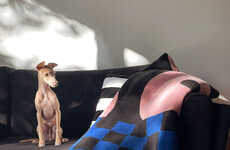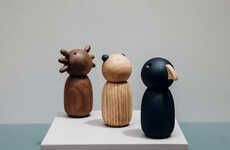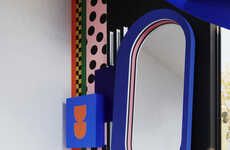
Laurie Hogin Paints Wildlife Without Adhering to Realistic Pigments
Jason Soy — February 7, 2012 — Art & Design
References: lauriehogin & sweet-station
Just because Laurie Hogin can render animals realistically, doesn’t mean she has to color them that way. After all, why look at boring old swamp-colored alligators when you can look at one that resembles a cherry slurpee? Hogin applies wacky hues to every animal she paints, producing purple and blue polka-dotted monkeys, eagles colored like the American flag and iguanas that look like patterns produced by kaleidoscopes. Fans of psychedelic artwork will truly find these creations groovy.
Don’t chalk these Laurie Hogin images up as art for art’s sake, however. Hogin explains that the animals within each painting are allegorical to things found within Western culture, and they’re colored in these vibrant and eclectic palettes to represent the fluorescent hues mainstream media uses to capture the public’s attention. A more in-depth analysis of Hogin’s work can be found on her personal website.
Don’t chalk these Laurie Hogin images up as art for art’s sake, however. Hogin explains that the animals within each painting are allegorical to things found within Western culture, and they’re colored in these vibrant and eclectic palettes to represent the fluorescent hues mainstream media uses to capture the public’s attention. A more in-depth analysis of Hogin’s work can be found on her personal website.
Trend Themes
1. Non-traditional Animal Art - Explore opportunities for disrupting traditional depictions of animals in art and media by using non-realistic colors.
2. Allegorical Animal Art - Create allegorical images of animals which represent cultural symbols in bright and vibrant colors to catch audience attention.
3. Psychedelic Animal Art - Create disruptive and psychedelic animal art with bright and bold colors that appeal to younger audiences.
Industry Implications
1. Art and Design - Opportunities for artists and designers to create and market unique and disruptive animal art that challenges traditional norms and appeals to younger generations.
2. Media and Advertising - Use non-traditional depictions of animals in advertising campaigns and media content to attract younger audiences.
3. Entertainment - Opportunities for creative incorporation of non-realistic animal art into TV shows, movies, and other entertainment mediums to appeal to younger audiences.
1.7
Score
Popularity
Activity
Freshness























